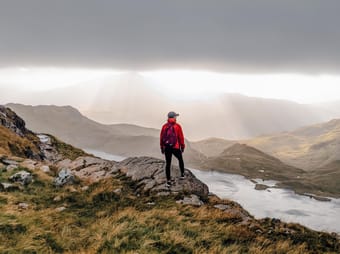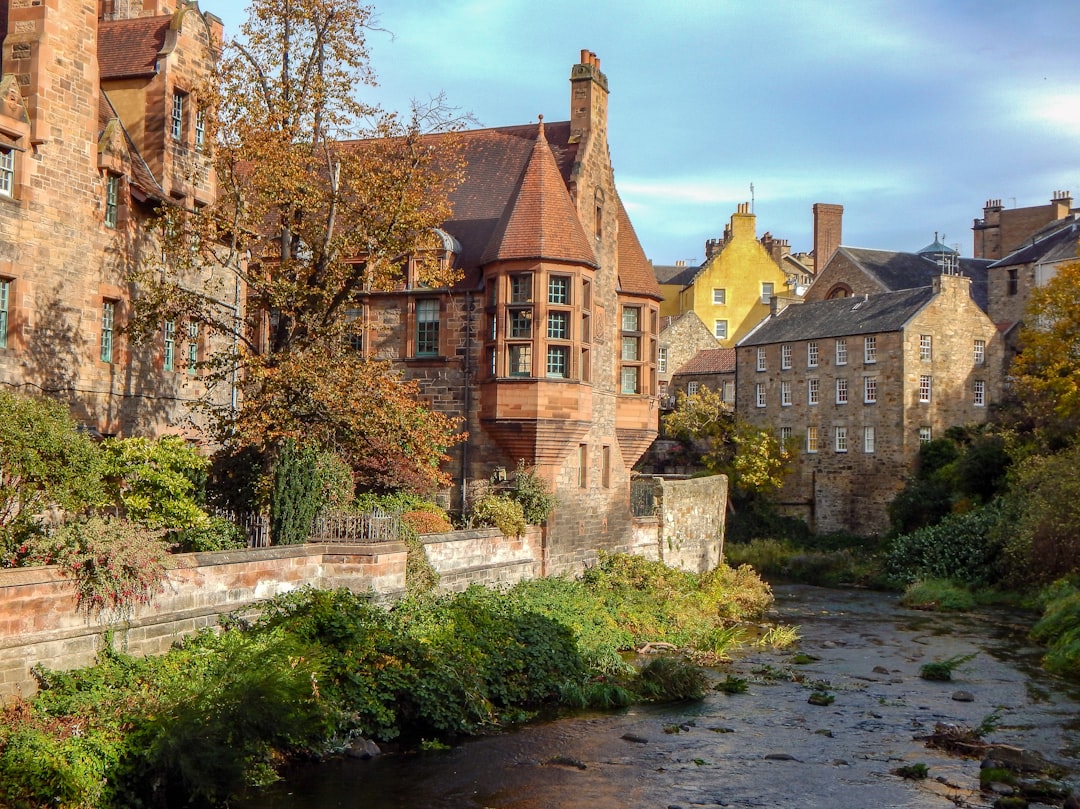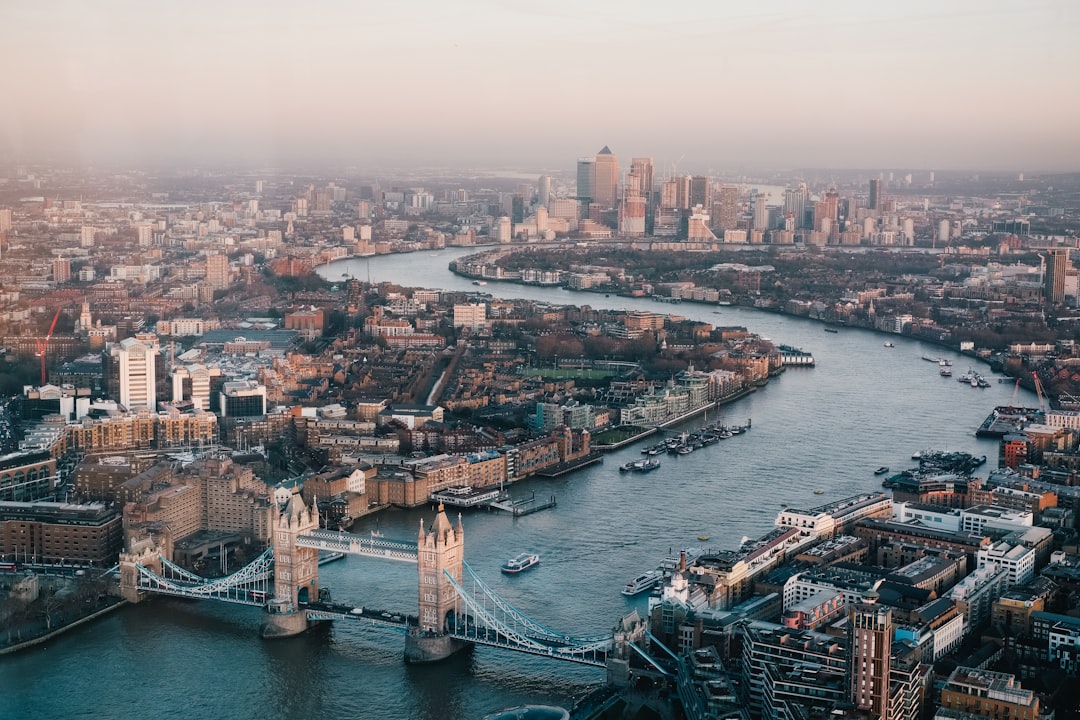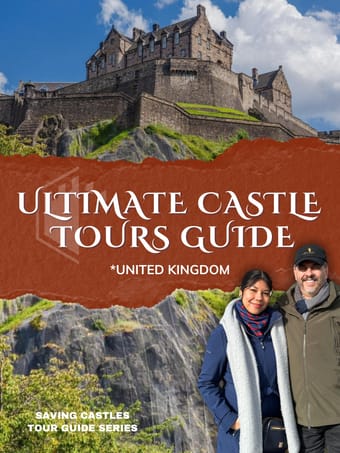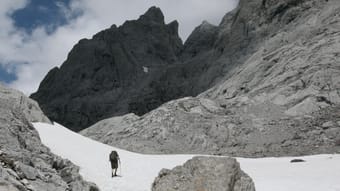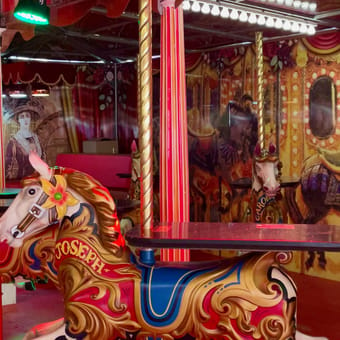Results for UK
Free and paid guides for the UK, all in one place.
A little bit more about myself:
After a one week roadtrip in Scotland and spending a year in the UK as part of my degree (Erasmus+), I fell in love with the UK. I then came back to France (my home country) to finish my master's degree, met my British husband online and we were on a long distance relationship for almost 3 years.
We got married in November 2022 and relocated to London in early 2023. Each chance we get, we escape London and visit the UK National Parks, towns and cities.
Through these guides, I want to encourage you to explore the UK's hidden gems and most beautiful locations.
Tip: If you want to get a sense of where these locations are relative to major cities like London, make sure to use the map feature!
I hope these guides will be useful and inspire you to explore more of the UK!
COMING SOON:
➕More London content + day trips from London
🌄Brecon Beacons National Park
🌊Cornwall
🌄Scotland Road Trips
🦖Jurassic Coast
🏙️Bath
🏙️Oxford & Cambridge
🌄Hastings Country Park
and more!
Be sure to tag me in your travel photos! @5olveig.ltr
NB: This is not a PDF but an interactive guide which means that when you click on a place in the guide or map you can directly open directions on your phone's Google Maps app, call restaurants or book hotels.
Don't forget to download the FREE Thatch app to get easier access!
Adventure • Architecture • Budget • Nature • Slow Travel • Photography • Van Life • Road Trip • Beach • Mountain • Camping
Free
17
After having lived in the UK for 2 years during the pandemic, I quickly realized how much there is to see and do on that tiny little island.
Since I lived in London during the pandemic when borders were closed, I really got to know the UK well. I tried to travel as much and as far as I could. Now I want to share this with you, I want to encourage you to explore the hidden gems and all the different corners of the UK.
Tip: if you want to get a sense of where these locations are relative to major cities like London, be sure to use the map feature!
I hope these guides are useful and inspire you to explore more of the UK!
COMING SOON:
➕ more London, Scotland + day trips content!
🌊 Cornwall
Adventure • Foodie • History • Art • Architecture • People & Culture • Slow Travel • Photography
Free
11
Get ready to traverse the stunning landscapes, immerse yourself in rich history, and experience the vibrant culture of this diverse and captivating country!
Whether you're a seasoned traveler or a first-time explorer, I've curated the perfect itinerary to ensure you make the most of your two weeks on the road.
Day by day, I'll take you on a thrilling exploration of Great Britain's most iconic destinations. From the charming streets of London to the majestic Scottish Highlands, each stop along the way promises awe-inspiring sights and hidden gems waiting to be discovered.
As you venture through England, soak up the cosmopolitan atmosphere of bustling cities like Liverpool, York, and Oxford. Soak in history of Cambridge, Canterbury and Stratford-upon-Avon.
Next, cross the border into Scotland, where breathtaking landscapes and centuries-old castles await you. Drive along the enchanting Loch Ness, seeking a glimpse of the elusive Nessie, and wander through the cobblestone streets of Edinburgh, a city steeped in medieval history. Don't miss the chance to explore the rugged beauty of the Scottish Highlands, with its misty mountains, shimmering lochs, and charming villages.
Continue your journey through Wales, a land of picturesque coastlines, ancient castles, and charming villages. Marvel at the architectural wonders of Cardiff Castle, and explore the breathtaking landscapes of Snowdonia National Park.
Throughout your road trip, you will find insider tips, highlighting must-visit attractions, local eateries, and hidden gems off the beaten path. Discover the best spots for traditional fish and chips, indulge in a delightful cream tea, and savor the flavors of regional cuisine at charming country pubs.
With this detailed itinerary and helpful recommendations, you'll have the freedom to create your own unforgettable memories. It will guide you on where to find the best viewpoints for stunning photo opportunities, the most exhilarating outdoor activities, and the most immersive cultural experiences.
This is a mobile friendly itinerary, so you can use it throughout your trip at any moment. Follow this guide exactly for a guaranteed amazing set of experiences (of course, if weather conditions permitting). Or you can combine our insights with your own research to craft the trip of your dreams!
Tag me in the photos/videos you will take - I'd love to see your experience! @annaberdysh
Adventure • Architecture • Art • Budget • Foodie • History • Nature • RV • People & Culture • Romantic • Slow Travel • Photography • Van Life • Road Trip
$29.99
9
In the Curated Spaces podcast I explore the best boutique hotels and places to stay across the UK 🇬🇧
We have compiled over 100 of Britain's best boutique hotels from sprawling countryside estates to remote island retreats. Whatever the occasion, we've got just hotel for it 👌
Boutique • Luxury • Budget • Wellness • Foodie • Slow Travel • Relaxation • Road Trip
$9.99
3
Discover the charming villages, historic city of York and the natural beauty of Yorkshire's countryside in a 3 day tour around 'Gods own Country'.
Having grown up and lived in Yorkshire for a good part of my life, I have ensured you get to see the major sights, taste some good 'old Yorkshire grub' and visit a few hidden gems that many people miss!
People & Culture • History • Beach • Nature
$5.00
1
Bask in a regal journey through time and taste with our comprehensive guide to the 50 best castle tours in the United Kingdom, now enhanced with our exclusive Saving Castles Regal Ranking. From the towering ramparts of Edinburgh Castle to the romantic ruins of Tintagel, this meticulously crafted guide offers a royal feast for history buffs and culinary enthusiasts alike. 2025 EDITION.
Each castle entry includes:
🏰 A brief history and description of the castle
🏰 Key features and must-see attractions
🏰 Practical visiting information
🏰 Regal Ranking: Our expert assessment on a 10-crown scale
Our innovative Saving Castles Regal Ranking evaluates each castle on six dimensions:
Historical Significance
Architectural Splendor
Preservation Perfection
Visitor Experience
Landscape Majesty
Accessibility Assurance
The Overall Regal Ranking distills centuries of grandeur into one powerful score, guiding you to experiences that match your unique interests.
Elevating your castle experience, our unique "Dining Near the Castle" section provides:
⭐ Restaurant name and location
⭐ Distance from the castle
⭐ Type of cuisine offered
⭐ A standout dish or local specialty to try
⭐ Google rating
⭐ Price range
⭐ An insider tip or interesting fact about the establishment
Don't just visit castles – experience them with the Saving Castles Regal Ranking. Let this guide transform your UK adventure into a trek through time, beauty, and unparalleled grandeur, complete with culinary delights fit for royalty.
50+ • Backpacker • Couples • Digital Nomads • Family • Groups • Architecture • Art • History • People & Culture • Photography • Road Trip • Romantic • Slow Travel
$6.79
$16.97
60% off
5.0
(1)
5
💡 Illuminate Your Seoul Adventure 💡
Embark on a mesmerizing journey through the heart of Seoul, the city where tradition intertwines with modernity. From the neon-lit streets to serene temple grounds, this guide is your compass to the soul of Seoul.
📘 CONTENT 📘
📍 Must-Visit Spots: From Historic Palaces to Contemporary Hubs
🛍️ Shopping Streets & Markets: Where to Bag the Best Deals
🏨 Rest in Comfort: Handpicked Hotels for Every Budget
🤵♂️ ABOUT ME 🤵♂️
I work as a Product Manager in a Tech Startup, but traveling is what truly excites me. With roots in India, and chapters of my life in the UK and USA, I've always been drawn to discovering new places. I have a penchant for exploring historical sites, wandering through cities, and diving deep into cultures, especially through local cuisines and conversations. In this guide, I've shared personal recommendations that go beyond the usual tourist spots, giving you a genuine taste of Seoul.
📣 Save this guide and subscribe to my profile for more fun and interesting recommendations.
Couples • Family • Architecture • People & Culture • History • Adventure
Free
9
Have you ever wondered why there are so many Indian restaurants in London? India and the UK have a long and unique shared history. Today, 1.8 million people in the UK are of Indian descent, making London one of the largest worldwide hubs for Indian cuisine. Because of the long shared history, Indian cuisine in the UK is also uniquely British. For example, try the bacon naan roll at Dishoom. Below, are some of my personal favourites (I’ve been to all of them) which include both classic Indian cuisine as well as some more modern interpretations.
Follow @anneotherhuangryasian on Instagram for more food recs!
I hope you enjoy this guide.
Any tips would be appreciated 😊
Foodie • History • Budget • Luxury • People & Culture • Sustainable/Eco • Relaxation
Free
5
Seven-day trek based in refugios.
INTRODUCTION
The Picos de Europa is a region of limestone peaks reaching over 2500 metres above sea level; the highest being Torre de Cerredo at 2650 metres. The route described here is one that I hiked alone in early summer. The best time to tackle the route is between June and September. There is more likely to be snow on the high passes in early June but they are usually not to difficult to negotiate.
The Picos de Europa is not as well known as the Pyrenees or Alps and as such the hiker traffic is less and the tourist infrastructure is less developed. This makes the area feel less spoilt but it can also make it a more challenging area to explore with fewer trails and little to no signposting. Always take a map with you: the Editorial Alpina 1:25,000 maps are the best. I took these and also used the outdooractive app and downloaded the relevant map tiles. This is useful for pinpointing where you are, in what can be confusing terrain. I was lucky to have clear weather for my entire trek but I would imagine that it's pretty difficult to navigate when the cloud is down on the mountains so take a compass too.
You can stay in refugios every night on this hike and wild camping is permitted above 1500m; details below.
I can't recommend the Picos de Europa as a hiking destination enough. The mountains are magnificent but there are also beautiful extensive woodlands at lower altitudes, as well as meadows full of wildflowers and butterflies. The juxtaposition between the stark limestone peaks and the gentle greenery of the valleys is beguiling.
DISCLAIMER: Please note that hiking in the Picos de Europa is not risk free. It is a very challenging area in which to hike. I accept no responsibility for any accidents you may experience while hiking this route. You are responsible for your own safety. Some of the dangers and difficulties are listed a little further down this guide.
HOW BUSY?
Unlike some of the more well know hikes around Europe this trail is less well trodden and as such the trail can be quite hard to follow at times, and at other times there is no trail! Despite this, refugios, being small, fill up fast (see below).
REFUGIOS
The hike is made easier if you stay in the staffed refugios where you can recharge your metaphorical batteries. Accommodation at these mountain huts is in communal dormitories and you will need to bring your own sleeping bag. It's best to book ahead as they are often full throughout the summer. Prices are around the €12-17 mark and they also do affordable meals (breakfast, picnic lunch and dinner).
There is also a handful of unstaffed, very basic mountain shelters with no services and no beds but these can be a good option in an emergency. Most of the refugios only accept cash so be sure to take plenty with you before you set off as there are no ATMs! All the refugios on the route are listed in the route description below with website links.
WILD CAMPING
Camping is only permitted at 1500m above sea level or higher. There is not much water anywhere above this altitude so be sure to fill up when you get the chance (at refugios) before camping in a remote spot.
POSADA DE VALDEON
This beautiful village tucked in the valley between the Macizo Central and Macizo Occidental is a lovely place to wander for a few hours. At the centre of the village there are a number of restaurants and bars and a small square with a water fountain. If you need somewhere to stay before or after the trek you'll find hotels, guest houses and a youth hostel. There is a hotel recommendation and link in the route description.
In the centre of the village is a pharmacy should you need any blister plasters! And on the road to the west of the village is the National Park office where you can find information about hiking and anything else to do with the national park.
GETTING THERE
From the UK there are Ryanair flights to Oviedo (Asturias airport) from London Stansted. A bit further afield you can get flights to Bilbao and Santander from the UK and the rest of Europe. Getting from the airport is a little complicated but there are buses to Posada de Valdeón from Oviedo changing in Cangas de Onis. The journey takes about 4.5hrs. There are also buses from Santander and Bilbao changing in Llanes and Riaño with the journey taking around 15hrs from Bilbao.
An easier but more expensive option is to get a taxi. You could also hire a car but of course you will have to leave the car sitting idle in Posada de Valdeón while you do the hike.
FLORA & FAUNA
This area of northern Spain is fantastic for wildlife. At lower elevations the beech and sessile oak woodland stretches for miles over rolling hills. This is part of the boreal forest that once would have covered much of Europe and is home to roe deer, wild boar, red squirrels, pine martens and brown bears.
In the skies you have a good chance of seeing griffon vultures, golden, booted and short-toed eagles, black kites and peregrines. Of the smaller passerine species the Picos are home to red-backed shrikes, black redstarts, spotted flycatchers and black woodpeckers.
But it's the wildflowers in the meadows and on the woodland edges that are the real joy and most easily appreciated. Vetches, cinquefoils and orchids create a colourful patchwork of colours with butterflies bringing the whole scene to life. Look out for swallowtails, fritillaries and hairstreaks.
NAVIGATION
Navigation is difficult as the terrain can be confusing and in many places there is no trail whatsoever. Take a map (1:25K Editiorial Alpina maps are the best), compass and GPS and know how to use them. It's also a good idea to download the map on a relevant map app. I used the outdooractive app but others are available.
WEATHER
Thunderstorms are common, usually in the afternoon and these can be particularly dangerous high up in the mountains. It's best to hike early and get to a refugio by lunchtime if there are afternoon thunderstorms in the forecast. The weather in this part of Spain is very changeable as it has a maritime climate. Rain and thick fog are possible but equally long periods of warm sunshine are not unusual. The best advice I can offer is to be prepared for anything. Pack suncream and a sunhat but don't forget your waterproofs either.
FALLING ROCKS
Rock falls are not unusual as chamois and other hikers can dislodge rocks above you. Getting caught in a rockfall is not so common but not impossible. Be aware and if you see rocks heading your way, and cannot find cover, crouch down on the floor and pull your rucksack over your head and back.
DRINKING WATER
There is very little running water as these mountains are mostly comprised of permeable limestone. You will need to take plenty of water with you each day (I packed three litres every day and usually drank it all). You can fill up at the refugios and there are a few fountains / fuentes although most of the ones I saw marked on the Editorial Alpina map were dry when I found them.
THE SUN
Sunburn and sunstroke are both real dangers and there is little shade. Keep hydrated and wear a sun hat that covers your neck.
TERRAIN
In some places you need to scramble up steep rocky sections. You will need to have experience in this kind of terrain and have a head for heights! The terrain is very rocky and uneven at higher altitudes so you will need strong, sturdy footwear. Trekking poles are also invaluable in providing support and helping you across and up awkward sections. There is also a lot of steep ascent and descent on this route so you will need to be reasonably fit.
DANGEROUS ANIMALS
On many parts of the trail you will encounter cows. In my experience they are very docile and used to trekkers so they shouldn't be of any concern. You may also find flocks of sheep and while these aren't dangerous they are often accompanied by shepherd dogs which have been trained to keep intruders away from the flock. They can be quite intimidating when they start barking at you. If you see sheep ahead it is best to give them a wide berth, even if this means veering away from the trail for a while. If you walk directly towards or through a flock of sheep you risk agitating the shepherd dogs.
Bears are not common in the Picos de Europa but there are bears in other parts of the Cantabrian Mountains, notably Somiedo National Park, not far to the west, and there is always the possibility of seeing an itinerant bear wandering through the Picos. Eurasian brown bears are not as big nor aggressive as the grizzly bears of North America so you shouldn't worry too much about an encounter. It's extremely unlikely you will see one so if you do, consider yourself very lucky.
Wild boar are common in the woodlands at lower altitudes. They are not as aggressive as some people will tell you and tend to be nocturnal. I did see some in the daytime near Vegabaño. As soon as they saw me they ran away, crashing through the undergrowth. As with any large animal it's best to simply give them plenty of space to move away from you.
I hope none of this advice puts you off hiking in the Picos de Europa. Yes, it's a challenging mountain area but the rewards for hiking here are great. Enjoy the hike!
Adventure • Nature • Slow Travel • Sustainable/Eco • Mountain • Camping
$12.00
3
Embark on a journey beyond the bustling streets of London with my comprehensive guide to the best the southern UK has to offer. Discover the vibrant beach town of Brighton, where historic charm meets the modern seaside allure. Traverse the iconic white cliffs of Dover and immerse yourself in the medieval splendor of Canterbury. Unravel the scholarly tapestry of Oxford, exploring its renowned university and architectural treasures. Experience the time-honored elegance of Bath, coupled with the mystical allure of Stonehenge. Lastly, venture to the picturesque city of Cambridge, renowned for its prestigious university and scenic riverbanks. This guide is your passport to unforgettable day trips, each destination offering a unique blend of history, culture, and natural beauty just a stone's throw away from the heart of London.
Adventure • Photography • History • Outdoors
Free
3
Explore the Enchanting Christmas Markets and Unforgettable Festive Experiences Across the UK! 🎄
The United Kingdom comes alive with festive cheer during the holiday season, offering an array of must-visit Christmas markets and an abundance of magical moments waiting to be discovered. Immerse yourself in the enchanting ambiance of the UK's winter wonderland, where twinkling lights, the aroma of roasted chestnuts, and the sound of carolers create an atmosphere like no other.
Embrace the warmth, hospitality, and festive spirit of the United Kingdom this Christmas season. From London's grandeur to the charming markets of Scotland and Wales, there's something to enchant every traveler and create unforgettable memories during this most wonderful time of the year. 🎅🎁
Female Solo • Digital Nomads • Couples • Backpacker • Adventure
$40.00
2
Jiun-Wei Lai
Available for hire
A guide to the top ten hot springs that travelers must revel in when visiting Taiwan!
Hot springs are one of Taiwan's characteristics. Due to Taiwan's special geological structure, located in the Ring of Fire, geothermal heat spreads throughout the country. Overall, there are 128 hot springs with signs; that is to say, traces of hot springs can be noticed in almost every city on the island. It is no exaggeration to name Taiwan as the kingdom of hot springs. As a hot spring lover, I found few places to get hot spring baths in the UK, which makes me miss the hot springs in my hometown. In addition, it also motivates me to share the beauty of hot springs in Taiwan with hot spring lovers from all over the world. Thus, this guide is listed. Come and roam in Taiwan!
50+ • Accessibility • Backpacker • Couples • Groups • Family • Adventure • History • Outdoors • People & Culture • RV • Photography • Road Trip • Romantic • Slow Travel • Sustainable/Eco • Van Life • Wellness • Relaxation
Free
2
Ever wanted to explore different cuisines and didn't know where to go? Look no further than right here. I've compiled a list of sixteen places that are a must-visit if you want to try something new in Seattle. 🤩
In this map, you will see options for 🇹🇷 Turkish, 🇧🇦 Bosnian,
🇺🇦 Ukrainian, 🇬🇷 Greek/Mediterranean 🇸🇾🇯🇴🇱🇧, 🇩🇿🇹🇳🇪🇬🇱🇾 North African, 🇵🇸 Palestinian, 🇲🇦 Moroccan, 🇦🇷🇲🇽🇭🇳 South/Central American, 🇮🇳 Indian, 🇨🇳 Southeast Asian, 🇳🇬🇪🇹 African, etc cuisines. If you have any dietary restrictions, I recommend checking with the restaurant itself before your visit.
As someone who grew up in Seattle and lived there from the ages of two to eighteen, I've had my fair share of great food experiences. Below are the recommendations I share with you!
As always, if you enjoy this map, please consider leaving a tip down below!
Don't forget to download Thatch app to access full features and to save ☑️ this map for future use!
Family • Couples • Groups • Foodie • People & Culture • Slow Travel
Free
2
Ludlow is a picturesque historic market town in south Shropshire. Bordering on Wales, Ludlow has a long and interesting borderlands history. It boasts many finely restored period buildings from medieval, Tudor and Georgian times and has a large castle.
Ludlow is a market town perfect for any foodie. The thriving market takes place each week on Mondays, Wednesdays, Fridays and Saturdays and is a great place to buy local food. Ludlow was the first town in the UK to ever plan a food festival, the first of which occurred in 1995. The festival was extremely successful and now takes place annually in September. Whilst exploring, be sure to stay fuelled and hydrated by trying out some local cuisine. Ludlow has an array of places to snack, brunch and eat your heart out.
Ludlow is located within the Shropshire Hills National Landscape (previously known as an Area of Outstanding Beauty), making it the perfect base for walkers wanting to explore this stunning part of the world. For a small town, Ludlow has such a lot to offer! But where to begin? Here's my 72 hour Ludlow Itinerary guide to help you make the most of your time in this beautiful town.
Free
1
Try ThatchGPT




